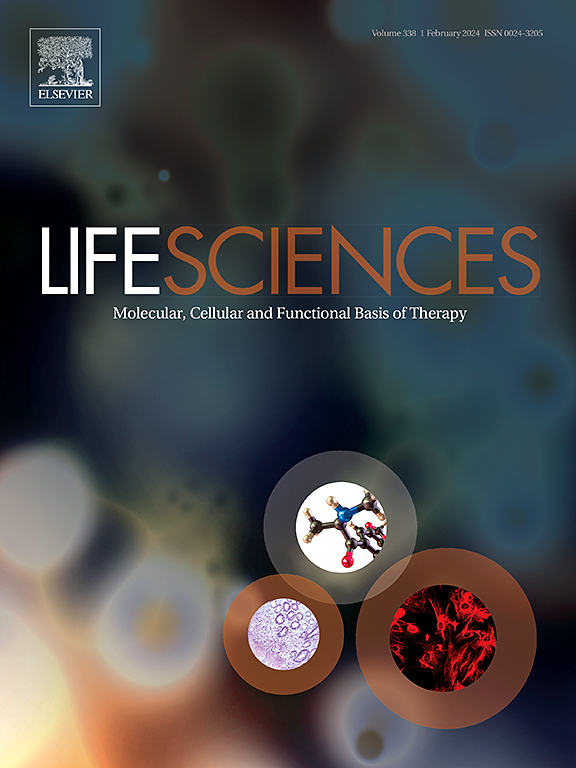Integrative machine learning and structure-based drug repurposing for identifying potent inhibitors of human SYK activity against cancer
IF 5.1
2区 医学
Q1 MEDICINE, RESEARCH & EXPERIMENTAL
引用次数: 0
Abstract
Overexpression of the spleen tyrosine kinase (SYK) has been found associated with different cancer types. Despite the investigation of inhibitors of SYK including fostamatinib, entospletinib, cerdulatinib, and TAK-659 for cancer therapy, their lack of specificity and potential off-target effects remain significant concerns. Addressing the need for targeted and non-toxic SYK inhibitors, this study integrates machine learning with structure-based drug design. Using bioactivity data, we employed machine learning algorithm, random forest, to screen an FDA-approved drug library. Molecular docking and dynamics simulations were then conducted to assess binding affinities and stability of identified compounds. Rifabutin, darunavir, and sildenafil were found as promising SYK inhibitors, showing strong interactions and stable conformations. Analysis of RMSD, RMSF, RoG, hydrogen bonding, PCA, and MMGBSA/MM-PBSA supported their efficacy as safer alternatives to current inhibitors. Our findings underscore the value of computational methods in drug discovery and advocate for further experimental validation of these compounds as SYK-targeted therapies. This study aims to advance the development of more effective and safer treatments for cancers associated with SYK overexpression.

综合机器学习和基于结构的药物再利用,以识别人类SYK抗癌活性的有效抑制剂
脾酪氨酸激酶(SYK)的过表达与不同类型的癌症有关。尽管对SYK抑制剂(包括fostamatinib、entopletinib、cerdulatinib和TAK-659)用于癌症治疗进行了研究,但它们缺乏特异性和潜在的脱靶效应仍然值得关注。为了满足对靶向和无毒SYK抑制剂的需求,本研究将机器学习与基于结构的药物设计相结合。利用生物活性数据,我们采用机器学习算法,随机森林,筛选fda批准的药物库。然后进行分子对接和动力学模拟,以评估鉴定的化合物的结合亲和力和稳定性。利法布汀、达那韦和西地那非被认为是很有前途的SYK抑制剂,具有很强的相互作用和稳定的构象。RMSD、RMSF、RoG、氢键、PCA和MMGBSA/MM-PBSA的分析支持它们作为现有抑制剂的更安全替代品的有效性。我们的发现强调了计算方法在药物发现中的价值,并提倡进一步实验验证这些化合物作为syk靶向治疗。这项研究旨在促进SYK过表达相关癌症更有效、更安全的治疗方法的开发。
本文章由计算机程序翻译,如有差异,请以英文原文为准。
求助全文
约1分钟内获得全文
求助全文
来源期刊

Life sciences
医学-药学
CiteScore
12.20
自引率
1.60%
发文量
841
审稿时长
6 months
期刊介绍:
Life Sciences is an international journal publishing articles that emphasize the molecular, cellular, and functional basis of therapy. The journal emphasizes the understanding of mechanism that is relevant to all aspects of human disease and translation to patients. All articles are rigorously reviewed.
The Journal favors publication of full-length papers where modern scientific technologies are used to explain molecular, cellular and physiological mechanisms. Articles that merely report observations are rarely accepted. Recommendations from the Declaration of Helsinki or NIH guidelines for care and use of laboratory animals must be adhered to. Articles should be written at a level accessible to readers who are non-specialists in the topic of the article themselves, but who are interested in the research. The Journal welcomes reviews on topics of wide interest to investigators in the life sciences. We particularly encourage submission of brief, focused reviews containing high-quality artwork and require the use of mechanistic summary diagrams.
 求助内容:
求助内容: 应助结果提醒方式:
应助结果提醒方式:


